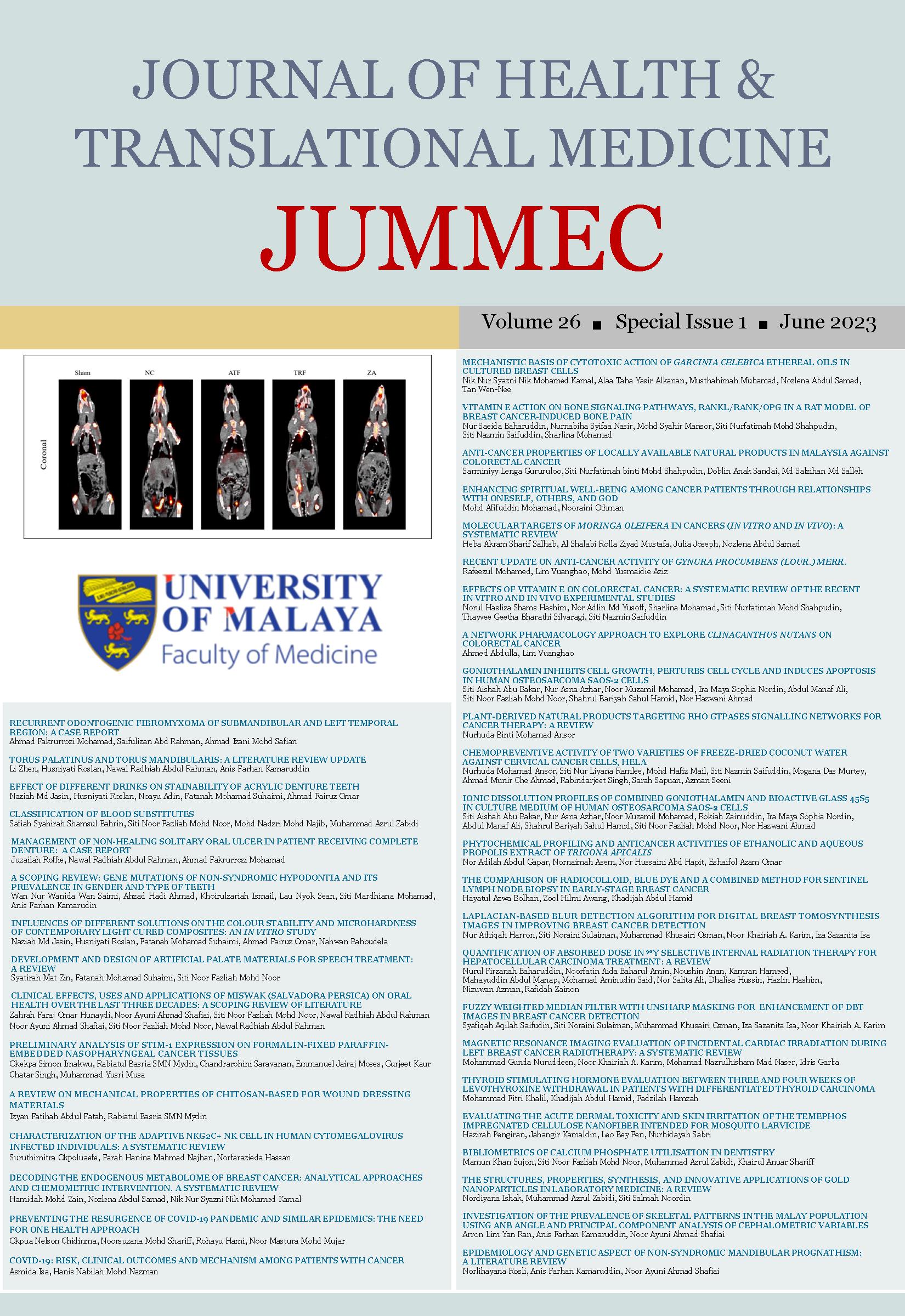RECURRENT ODONTOGENIC FIBROMYXOMA OF SUBMANDIBULAR AND LEFT TEMPORAL REGION: A CASE REPORT
Received 2022-12-11; Accepted 2023-03-18; Published 2023-06-06
DOI:
https://doi.org/10.22452/jummec.sp2023no1.25Abstract
Odontogenic myxofibroma (OM) is a benign odontogenic tumour of maxillofacial bone with locally aggressive behaviour. It is thought to arise from the odontogenic ectomesenchyme of dental pulp or periodontal ligament. Odontogenic myxofibroma typically presents as painless slow growing tumour with high recurrence rates ranges from 10% to 45%. A case of recurrent odontogenic myxofibroma of submandibular, left preauricular and left temporal region presented in this case report. An 11-year-old Malay girl complaint of a painless, gradually progressive firm swelling on the lower left side of the jaw for 6 months duration. On clinical examination revealed firm swelling from the left angle of the mandible to the left parasymphysis area. A dental panoramic radiograph and computed tomography (CT) scan of the head and neck showed expansile lesion at left posterior mandible causing thinning and erosion of the mandibular cortex, multiloculated with tooth germ of 38 within and displaced inferiorly. Histopathological examination revealed stellate to spindle shape cells dispersed in a myxoid background. A final diagnosis of odontogenic myxofibroma has been made. Hence, left segmental mandibulectomy with condyle disarticulation was done via a submandibular approach. Unfortunately, a year later she had recurrence at bilateral submandibular region extending to left preauricular and left temporal region associated with pain and unable to close her mouth. Multiple surgery was carried out beginning with removal of the tumour at the bilateral submandibular region followed by removal of tumour at left temple. The operations were uneventful. However, tumour excision in the left preauricular region is yet to be performed pending magnetic resonance imaging (MRI) investigation to evaluate the soft tissue extension prior to surgical planning.
Downloads
Downloads
Published
Issue
Section
License
All authors agree that the article, if editorially accepted for publication, shall be licensed under the Creative Commons Attribution License 4.0 to allow others to freely access, copy and use research provided the author is correctly attributed, unless otherwise stated. All articles are available online without charge or other barriers to access. However, anyone wishing to reproduce large quantities of an article (250+) should inform the publisher. Any opinion expressed in the articles are those of the authors and do not reflect that of the University of Malaya, 50603 Kuala Lumpur, Malaysia.


